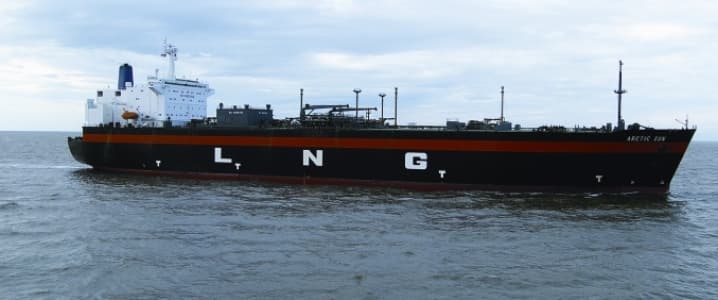The U.S. Gulf coast is positioning itself to soon have a hub of LNG export capability that will rival any country except for Qatar and Australia.
After usurping coal as the prime U.S. electricity source in January 2016, U.S. domestic supply is becoming saturated as companies compete for decreasing margins. The natural reaction to internal abundance is to look for exports.
With Qatar having the world’s largest LNG export (liquefaction) capacity at around 158 Bcfd, the U.S. is looking to add competition to the global market.
Recently, two significant events changed the natural gas playing field: the advent of hydraulic fracking of natural gas in the U.S. around 2006, which caused an ever-increasing supply of cheaper gas, and the Fukushima nuclear disaster in Japan in 2009, causing Japan to import an ever-increasing amount of natural gas.
Over the past year, world LNG prices, shown in $USD / Million British Thermal Units ($/MBtu) have had the trend to lower and equalize across all regions.


While prices in the U.S. and Canada have decreased marginally, prices in all other areas of the globe have fallen by 40-50 percent. Prices in northeast Asia have fallen by the most, where prices averaged $18/MBtu just two years ago, according to Platts. This equalization trend is driven largely by a significant increase in export capacity from countries such as Qatar, Papa New Guinea, Algeria and Australia, which has finally absorbed Japanese demand post-Fukushima. Related: Is Wall Street Right About Electric Utility Stocks?
A further equalization of prices across all regions can be expected as the trend toward medium and spot price buying increases over long-term contracts. In the early 2000s, long-term contracts made up over 95 percent of supply contracts; this number has since decreased to under 70 percent.

With the advent re-liquefaction at import terminals, and lower-cost shipping tracking by services such as kpler, non-long-term contracts will soon become the norm. This will allow markets to react to disturbances much faster than with long-term contracts, but will also act to equalize prices across regions.

Trends like these can be worrisome for huge billion-dollar LNG export terminal construction projects in the U.S. and Canada. BNP Paribas has been eyeing a $36 billion dollar export terminal project in Canada for quite some time. Delays due to environmental concerns and assessments have put the project in question. Ultimately, jurisdictions with friendlier views towards LNG terminals have been winning the export rush.
Australia and Qatar have significantly added export capacity, fulfilling an export need that had been steadily growing since the early 2000s, and had a huge jump in 2009-2011 due to Fukushima.
(Click to enlarge)
The U.S. currently has two operational LNG (liquefaction) export terminals, ConocoPhillips’ Kenai Alaska terminal with a capacity of 0.2 Bcfd opened in 1969 and the Cheniere/Sabine Pass LNG – Train 1 (out of a total 6 trains, 5 are currently under construction) with a capacity of 0.7 Bcfd. However, U.S. export capacity is currently being built up with expediency. By the end of next year, Cheniere expects Trains 1-4 to be operational, and Dominion expects to have its Cove Point LNG operational as well. Related: OPEC Needs 650,000 bpd To Avoid Global Supply Deficit
Canada, meanwhile, is stalling and has over 20 LNG export terminals under consideration—however, none of them have secured their final investment decisions from backers.
ADVERTISEMENT
(Click to enlarge)
If all construction goes as planned, by 2020, the U.S. Gulf coast will have a hub of LNG export capability rivalling any country except Qatar and Australia.
Recently, world LNG markets have been some of the most dynamic in the world, after new technologies and new exporting countries brought on new supply, while China and Southeast Asia brought on new demand. The 2020 LNG market will continue to be as dynamic as it has been, with the U.S. playing a more significant role on the world stage. However, despite satiating internal natural gas demand, the U.S. will find the international markets a more competitive marketplace when it becomes a significant player.
By Matt Slowikowski for Oilprice.com
More Top Reads From Oilprice.com:
- World’s Helium Problem May Have Just Gotten Solved
- $13 Billion Oilfield Services Merger Set To Move Forward
- Railroads A Safe Bet Even As Oil And Coal Shipments Down




















